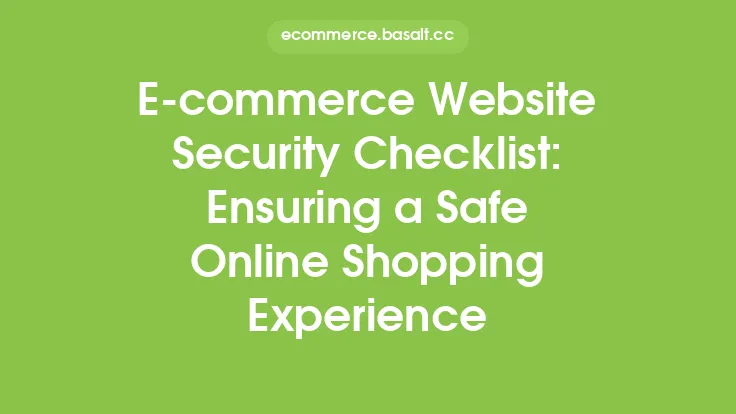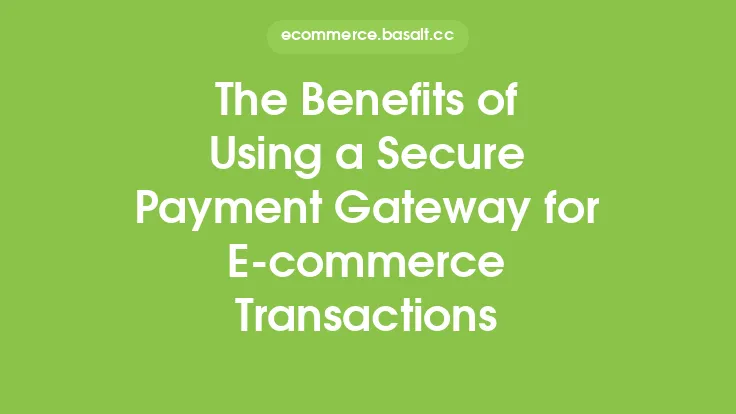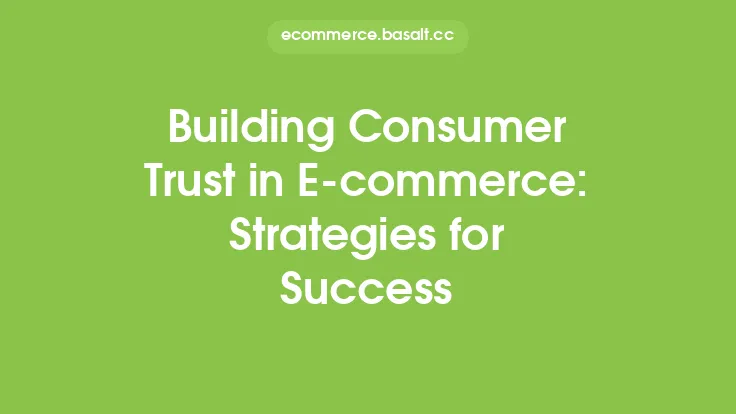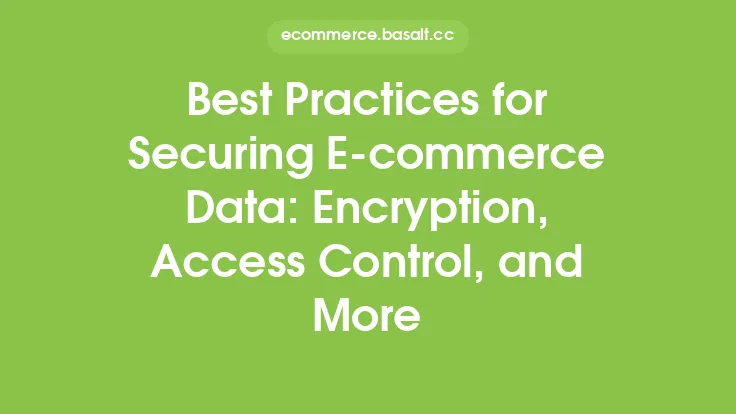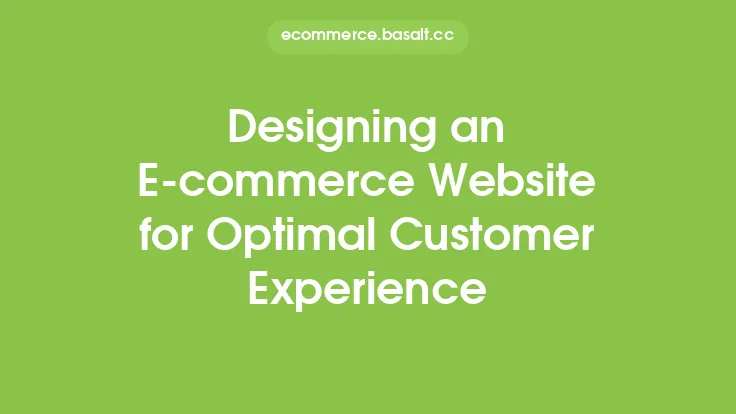When it comes to building an e-commerce website, security is a top priority. A secure website not only protects sensitive customer information, but also helps to build trust and credibility with potential customers. In this article, we will provide a comprehensive checklist for developers and merchants to ensure that their e-commerce website is secure and compliant with industry standards.
Introduction to E-commerce Security
E-commerce security refers to the measures taken to protect an online store from various types of cyber threats, such as hacking, malware, and data breaches. A secure e-commerce website is essential for protecting sensitive customer information, such as credit card numbers, addresses, and personal data. Additionally, a secure website helps to prevent financial losses, damage to reputation, and legal liabilities.
Choosing a Secure E-commerce Platform
When building an e-commerce website, it's essential to choose a secure platform that provides a solid foundation for security. Some popular e-commerce platforms, such as Shopify, Magento, and WooCommerce, offer built-in security features, such as encryption, firewalls, and access controls. When selecting a platform, consider the following factors:
- Security features: Look for platforms that offer robust security features, such as SSL encryption, two-factor authentication, and regular security updates.
- Compliance: Ensure that the platform is compliant with industry standards, such as PCI DSS and GDPR.
- Customization: Choose a platform that allows for customization and flexibility, so you can tailor your security settings to meet your specific needs.
Implementing Secure Payment Gateways
A secure payment gateway is essential for protecting sensitive customer information, such as credit card numbers and personal data. When implementing a payment gateway, consider the following factors:
- Security features: Look for payment gateways that offer robust security features, such as tokenization, encryption, and secure socket layer (SSL) protection.
- Compliance: Ensure that the payment gateway is compliant with industry standards, such as PCI DSS and GDPR.
- Integration: Choose a payment gateway that integrates seamlessly with your e-commerce platform, to minimize the risk of security vulnerabilities.
Securing Customer Data
Customer data, such as addresses, phone numbers, and personal information, is a valuable asset that requires protection. When securing customer data, consider the following factors:
- Encryption: Use encryption to protect customer data, both in transit and at rest.
- Access controls: Implement access controls, such as passwords and two-factor authentication, to restrict access to customer data.
- Data storage: Ensure that customer data is stored securely, using secure servers and databases.
Protecting Against Common E-commerce Security Threats
E-commerce websites are vulnerable to various types of security threats, such as hacking, malware, and denial-of-service (DoS) attacks. To protect against these threats, consider the following measures:
- Firewalls: Implement firewalls to block unauthorized access to your website and network.
- Intrusion detection: Use intrusion detection systems to monitor your website and network for suspicious activity.
- Regular updates: Regularly update your website, platform, and plugins to ensure that you have the latest security patches and features.
Conducting Regular Security Audits
Regular security audits are essential for identifying vulnerabilities and improving protection. When conducting a security audit, consider the following factors:
- Vulnerability scanning: Use vulnerability scanning tools to identify potential security vulnerabilities.
- Penetration testing: Conduct penetration testing to simulate real-world attacks and identify weaknesses.
- Compliance scanning: Use compliance scanning tools to ensure that your website is compliant with industry standards.
Ensuring Compliance with Industry Standards
Compliance with industry standards, such as PCI DSS and GDPR, is essential for protecting sensitive customer information and avoiding legal liabilities. When ensuring compliance, consider the following factors:
- PCI DSS: Ensure that your website is compliant with PCI DSS standards, which require merchants to implement robust security controls and procedures.
- GDPR: Ensure that your website is compliant with GDPR standards, which require merchants to protect sensitive customer information and provide transparency into data collection and usage.
Best Practices for E-commerce Security
In addition to the measures outlined above, there are several best practices that can help to improve e-commerce security. These include:
- Using strong passwords and two-factor authentication
- Implementing secure socket layer (SSL) protection
- Regularly updating software and plugins
- Monitoring website and network activity for suspicious behavior
- Providing security awareness training to employees and stakeholders
Conclusion
Building a secure e-commerce website requires careful planning, attention to detail, and a commitment to ongoing security and compliance. By following the checklist outlined in this article, developers and merchants can help to ensure that their e-commerce website is secure, compliant, and protected against common security threats. Remember, security is an ongoing process that requires regular monitoring, updates, and maintenance to ensure the protection of sensitive customer information and the integrity of your online store.
